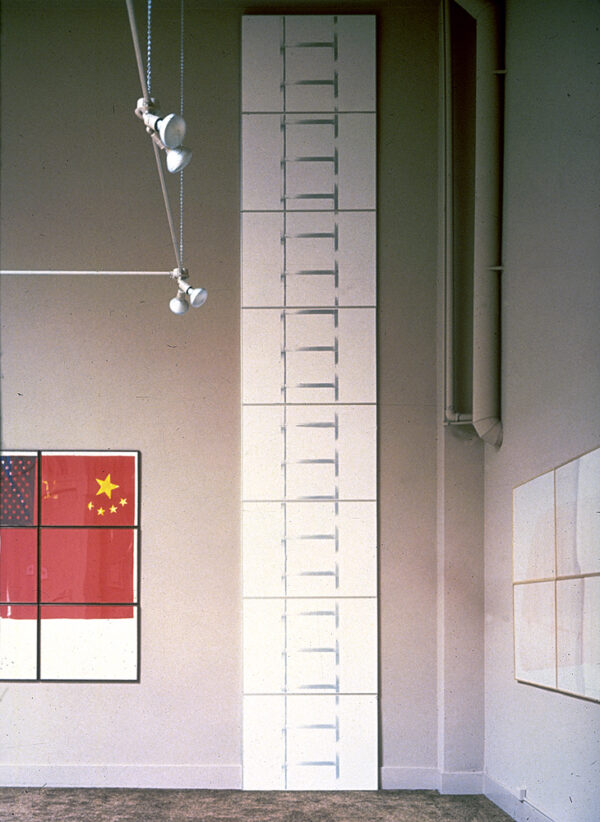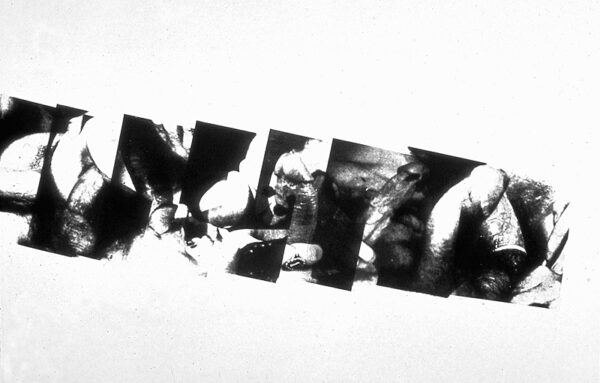Vito Acconci (1940-2017) was a provocative artist who worked in many different media including performance, architecture, installation and film. He was an influential figure in the international art world for over fifty years. Born in 1940 in the Bronx, New York, he received a BA from Holy Cross College and an MFA from the University of Iowa. Acconci began as a poet, working first in the context of visual art in the late 1960s. He wrote critical pieces for catalogs and publications including New Observations, October and Artforum, in addition to his poetry and fiction.
Acconci’s artwork confronts, head-on, problems of self-analysis and social interaction. Sometimes aggressive, sometimes sneaky, sometimes seductive, always subversive, in his performance art he has trailed a woman through the street as an experiment in discomfort and intimacy. His videos can be personal to the point of unnerving: for his video Open Book (1975), he filmed his own mouth, unnaturally open as he attempted to speak to the viewer, repeatedly pleading and apologizing.
In the 1980s, Acconci began making participatory sculptures, where viewers’ activity would result in the construction and destruction of houses. He became interested in architecture, landscaping and furniture design, especially that which integrates public and private space: “When you design a building, you’re designing people’s behavior,” he has said. With that philosophy, at the end of the ‘80s he formed the Acconci Studio, a group of architects who design projects for public spaces, from transfer corridors and moving floors in airports to water parks and skate parks, from islands to bus shelters to tea sets. In 2003 the Acconci Studio designed Light Beams for the Sky of a Transfer Corridor, a public art piece at the San Francisco International Airport that was funded by the San Francisco Arts Commission. The piece consists of a long, acrylic beam, square in section and lit from within, that twists and crisscrosses through a transfer corridor and houses payphones at its ends.
In an interview with Robin White during his second project at Crown Point Press in 1979, Acconci said, “I think of art as having a kind of instrumental use…. When I say I ‘make art,’ I don’t mean a kind of one-of-a-kind, self-enclosed art, but I mean art as this kind of instrument in the world.” He put the etchings 20 Foot Ladder For Any Size Wall (1979-1981) and Two Wings For Wall And Person (1979-1981) into an architectural context: “When I was thinking, initially, of the images for the etchings, the ladder and the wing came. The ladder was very, very easily a vertical. And the wing, this could be the horizontal,” he said. Extremely large, these prints command any space they are in.
In 1987, a retrospective exhibition entitled Vito Acconci: Domestic Trappings, was shown at the La Jolla Museum of Contemporary Art in California and traveled to the Neuberger Museum in Westchester, New York, and several other institutions. Acconci had other solo exhibitions in New York at the Brooklyn Museum of Art, the Whitney Museum of American Art, and the Museum of Modern Art; in Chicago at the Museum of Contemporary Art; and in Germany at the Kolnischer Kunstverein, Cologne. In 2016, he was the subject of a major retrospective, titled Vito Acconci: Where We Are Now (Who Are We Anyway?), 1976 and curated by Klaus Biesenbach, at MoMA PS1 in New York. His work has been shown in numerous group exhibitions in museums around the world and in many notable survey shows, including Documentas 5, 6, and 7 in Kassel, Germany, the Whitney Biennial, New York, and the Venice Biennale. He won grants and awards from the American Academy in Rome, the Berlin Deutscher Akademischer Austauschdienst, the Guggenheim Foundation, the New York State Council on the Arts, and the National Endowment for the Arts. He taught at schools and institutions nationally, including the Nova Scotia College of Art and Design, Halifax; the California Institute of the Arts, Valencia; the Cooper Union, New York; the School of the Art Institute of Chicago; Yale University, and Parsons School of Design.
Vito Acconci lived and worked in Brooklyn, New York, until his death in 2017. The artist’s estate is represented by Art Agency Partners and Pace Gallery.
-Rachel Lyon, Crown Point Press
VISION #5: ARTISTS’ PHOTOGRAPHS (1982)





